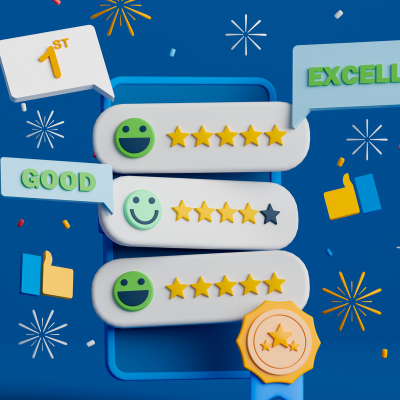The hybrid working model rose to the fore thanks to Covid-19 and now it gives people more choice as to where they would like to be based on a daily basis.
The pandemic has proven that many jobs can in fact be carried out remotely, prompting people to reflect on their previous, often stressful working habits and are now enjoying a flexible blend of remote and in-office working that suits both their professional and personal circumstances.
MERJE’s recent research found that a definitive more than three quarters (76%) of candidates would not be interested in a job opportunity if the hiring business required full-time in-office working.
Furthermore, according to the EY 2021 Work Reimagined Employee Survey, 90% of employees want flexibility in where and when they work, 54% are prepared to quit if they aren’t offered the flexibility they want and, on average, employees expect to work between two and three days a week remotely after the pandemic.
In a nutshell, employees have learnt what works best for them over the past year. It could be that they struggled to juggle their jobs with childcare or that the daily commute no longer feels sustainable. Whatever the case, they better understand now what they appreciate most about working remotely and the aspects of the office they’ve missed the most.
Hybrid working is, essentially, all about harnessing the new working paradigm and giving people more autonomy to decide how, when and where they work best and are at their most productive. However, once this new found independence has been granted, it will be hard for employers to take the power back, should the need arise. This is why implementing a successful hybrid working model isn’t without its challenges to leadership and senior management teams.
Achieving and maintaining a winning situation for employees, their managers and the overarching organisation won’t happen without having a strategic plan in place. This is why businesses need to be aware of some of the risks that hybrid working poses and understand how to overcome them.
Being visible
Visibility is a cornerstone of great leadership. This was easy when everyone occupied the same workspace, but now it’s vital that leadership teams are equally accessible to workplace and remote employees.
For those working remotely, however productive they are, they will inevitably feel a sense of being cut off from the rest of the business. It might appear to them that employees based in the office receive more recognition for their work, or are given better projects to handle.
To that end, people will want transparency, honesty and fairness in how commercial decisions are reached and managers will need to treat people equally to avoid any claims of injustice. The easiest way to ensure visibility is to run regular check-ins, giving workers the chance to ask questions, while keeping the lines of communication open and flowing.
Building a strong team
A risk to hybrid working is that a palpable distance may emerge between colleagues who might have once been close but now drift apart as they spend less time together at work.
To keep people unified at a time when they aren’t together in person, new systems and ways of working should be established to protect the bond. This might include implementing daily meetings using video conferencing technology. This will ensure that people stay connected and on the same page when it comes to liaising over their day-to-day responsibilities.
Ensuring good engagement
In a hybrid world, it will be challenging for managers to keep a handle on team morale and overall engagement. This is why it’s important to maintain good levels of communication in order to measure employee satisfaction.
This is because many people who work from home can feel isolated, which can lead to issues with staff retention and loyalty. Bearing this in mind, it’s important to take the time to consult with staff and offer them regular feedback surveys to find out about what they’re thinking.
If people are feeling isolated, management and leadership can be trained in how to effectively support these individuals and positively impact on employee engagement. The same goes for regular appraisals, training and goal setting, so that people can progress on their career pathway and ensure that staff members stay loyal and motivated.
Creating a purposeful company culture
For many organisations who were once mainly based in a physical office space, the opportunity for certain routines, rituals and jokes might have become obsolete when remote working was introduced. Moving to a hybrid model creates an opportunity to review what aspects of a culture are important to preserve and those which no longer serve a purpose in the new environment.
Training managers to look after remote teams
A positive aspect of the pandemic has been the emergence of increased trust across workforces. This is because, as people worked from home and were largely out of sight, managers had little choice but to let go and hope for the best. However, on a long-term basis, it can be difficult to maintain this way of working as performances can’t easily be monitored and it’s hard to tell whether people are feeling included and engaged.
This is where management training can prove useful. The way in which senior staff members monitor performance, engage their team and approach mental wellbeing are vital skills which, if not carried out in the right manner, can have a negative impact on employee satisfaction and motivation.
Leading by example on wellbeing
When it comes to remote or hybrid working, protecting employee wellbeing is of the utmost importance. When people work remotely, they’re less likely to set boundaries, take breaks or to stop working at a routine time. As the transition towards hybrid working gathers pace, leaders need to be aware of the dangers of ignoring the signs of burnout, stress or poor mental health.
Employees, regardless of whether they’re at home or in the office, should work within clearly defined hours and take rests. The best way to achieve this is to set clear parameters and to lead by example. If employees see their leaders switching off at a certain time and taking regular screen breaks, they’re much more likely to follow suit.
Empathy, trust and establishing the culture have always been important leadership skills. Now, as we move into this new way of working, these traits have become more important than ever. At its core, listening, observing and responding will stand any leader in good stead for success. Listening to the needs of employees and adapting to them in an agile manner will forge a productive and creative hybrid workforce.
Read our guide, all about how to implement a successful hybrid working model.
If you’d like any further advice around hybrid working or are looking for a role which offers flexibility, please get in touch with our team.







